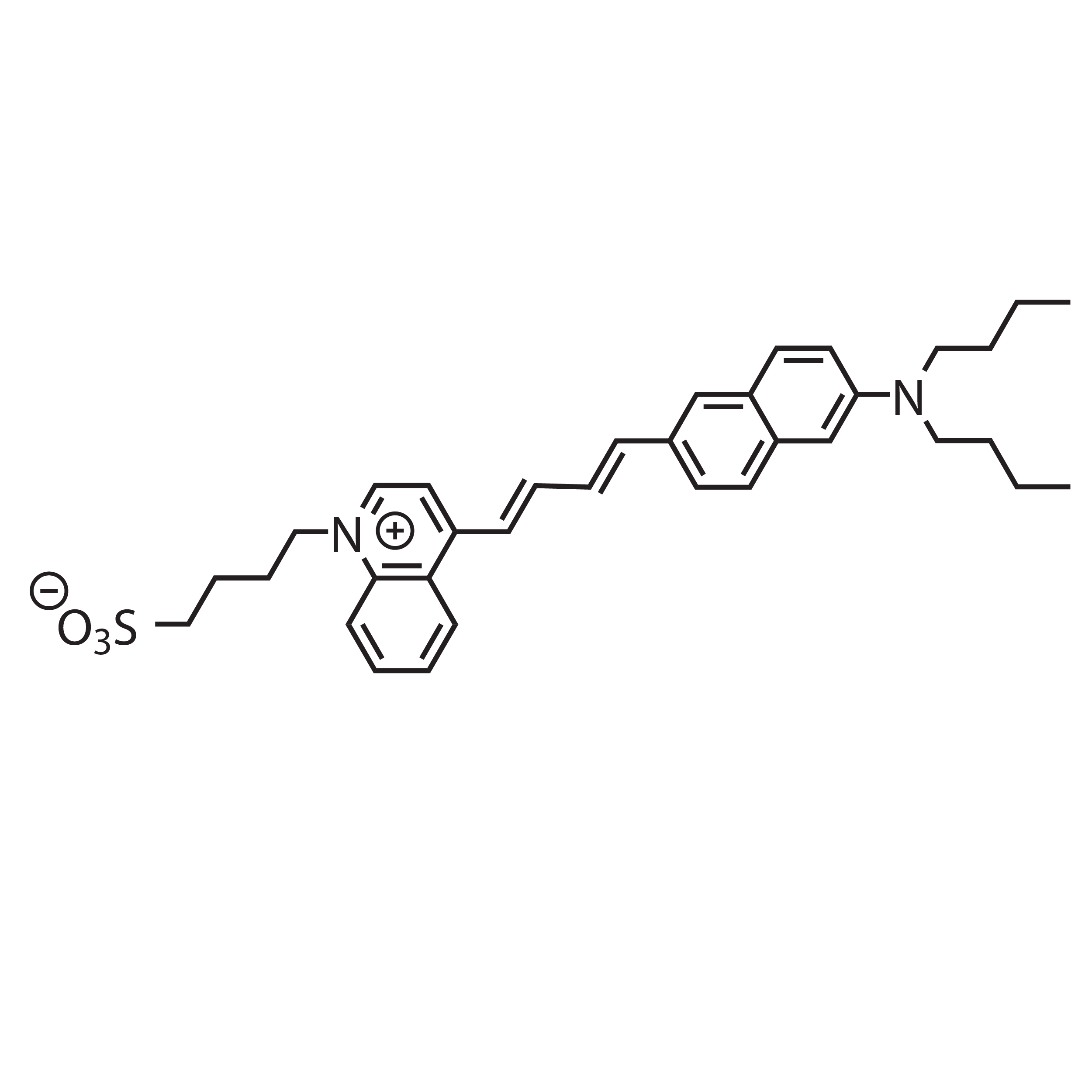 Image 1 of
Image 1 of


CytoVolt1 - Contact CytoCybernetics to Purchase
Available through our partnership with CytoCybernetics. Contact admin@cytocybernetics.com for a quote
Absorbance, emission peaks in multilamellar lipid vesicles (MLVs) shown above: 531 nm, 722 nm.
Absorbance, emission peaks in ethanol: 572 nm, no fluorescence.
Recommended excitation range: 620-660 nm.
MW: 570.78 g/mol
Other names: Di-4-ANBDQBS (JPW-6033)
Available through our partnership with CytoCybernetics. Contact admin@cytocybernetics.com for a quote
Absorbance, emission peaks in multilamellar lipid vesicles (MLVs) shown above: 531 nm, 722 nm.
Absorbance, emission peaks in ethanol: 572 nm, no fluorescence.
Recommended excitation range: 620-660 nm.
MW: 570.78 g/mol
Other names: Di-4-ANBDQBS (JPW-6033)
Available through our partnership with CytoCybernetics. Contact admin@cytocybernetics.com for a quote
Absorbance, emission peaks in multilamellar lipid vesicles (MLVs) shown above: 531 nm, 722 nm.
Absorbance, emission peaks in ethanol: 572 nm, no fluorescence.
Recommended excitation range: 620-660 nm.
MW: 570.78 g/mol
Other names: Di-4-ANBDQBS (JPW-6033)
Structure and Spectra


Product Details:
Pre-dried aliquots (solid, solvent removed)
Quantity: 100 nmol / tube (57 μg)
2.0-mL free standing polypropylene tubes
Sealed cap
Individually labeled
Bagged with desiccant
Order Information
Dye is called “CytoVolt1” and is available through our partnership with CytoCybernetics
Contact admin@cytocybernetics.com for a quote
Success Stories
Lopez-Izquierdo, A., M. Warren, M. Riedel, S. Cho, S. Lai, R. L. Lux, K. W. Spitzer, I. J. Benjamin, M. Tristani-Firouzi, and C. J. Jou. 2014. A near-infrared fluorescent voltage-sensitive dye allows for moderate-throughput electrophysiological analyses of human-induced pluripotent stem cell-derived cardiomyocytes. Am J Physiol Heart Circ Physiol. PubMed
Matiukas, A., B. G. Mitrea, M. Qin, A. M. Pertsov, A. G. Shvedko, M. D. Warren, A. V. Zaitsev, J. P. Wuskell, M. D. Wei, J. Watras, and L. M. Loew. 2007. Near-infrared voltage-sensitive fluorescent dyes optimized for optical mapping in blood-perfused myocardium. Heart Rhythm. PubMed
Warren, M., K. W. Spitzer, B. W. Steadman, T. D. Rees, P. Venable, T. Taylor, J. Shibayama, P. Yan, J. P. Wuskell, L. M. Loew, and A. V. Zaitsev. 2010. High-precision recording of the action potential in isolated cardiomyocytes using the near-infrared fluorescent dye di-4-ANBDQBS. Am J Physiol Heart Circ Physiol. PubMed
Aras, K. K., N. R. Faye, B. Cathey, and I. R. Efimov. 2018. Critical Volume of Human Myocardium Necessary to Maintain Ventricular Fibrillation. Circ Arrhythm Electrophysiol. PubMed
Lee, P., J. G. Quintanilla, J. M. Alfonso-Almazán, C. Galán-Arriola, P. Yan, J. Sánchez-González, N. Pérez-Castellano, J. Pérez-Villacastín, B. Ibañez, L. M. Loew, and D. Filgueiras-Rama. 2019. In-Vivo Ratiometric Optical Mapping Enables High-Resolution Cardiac Electrophysiology in Pig Models. Cardiovasc Res. PubMed

